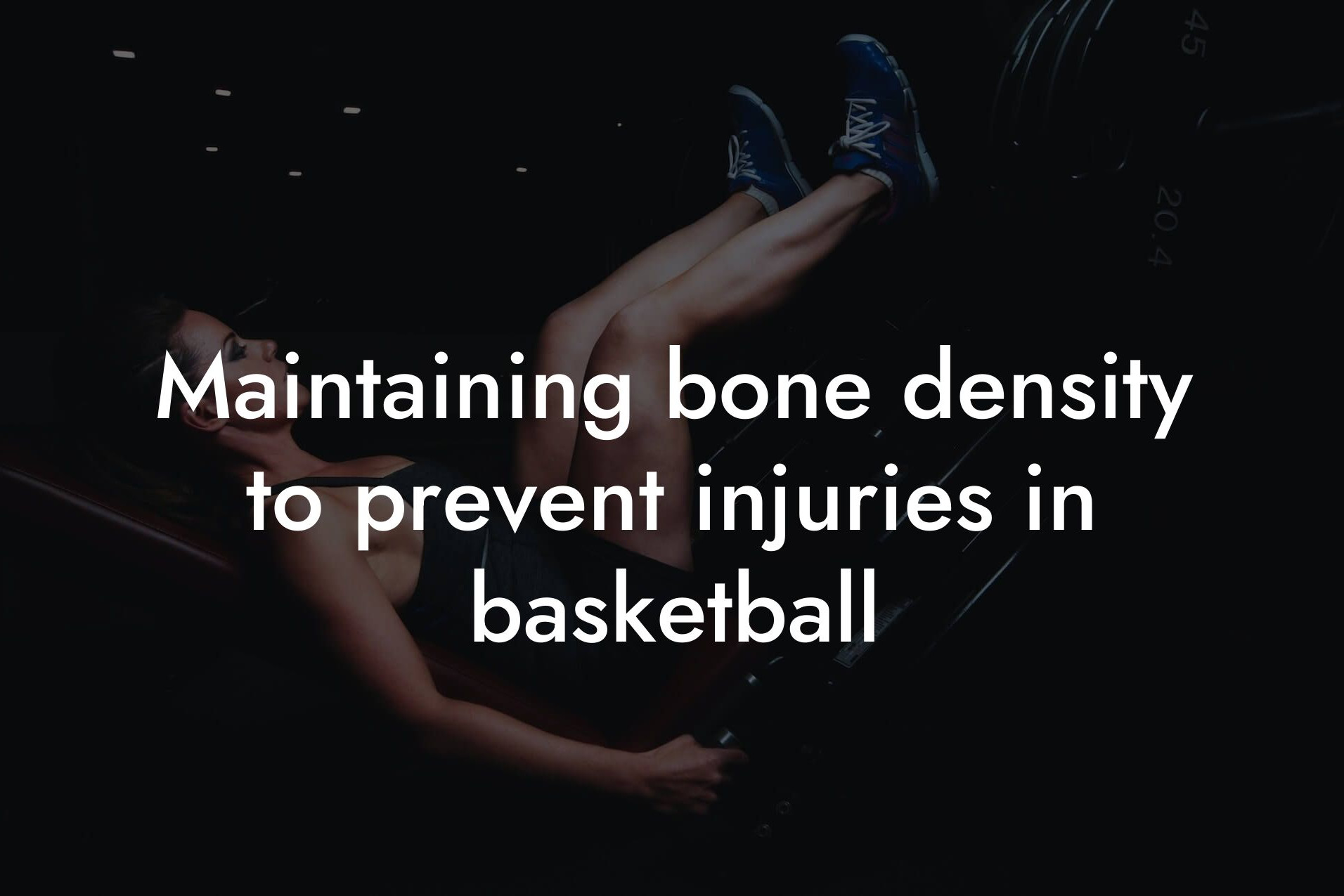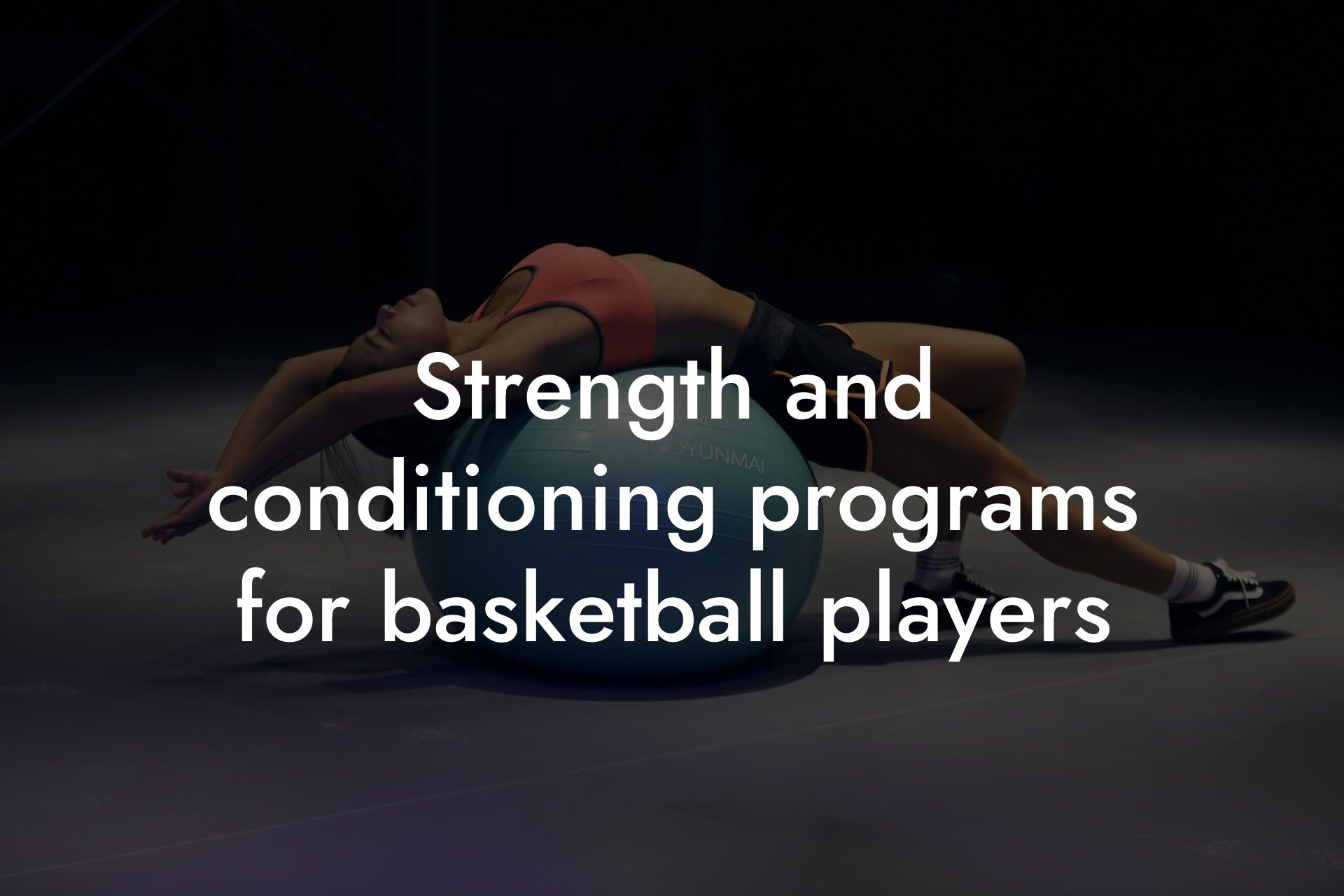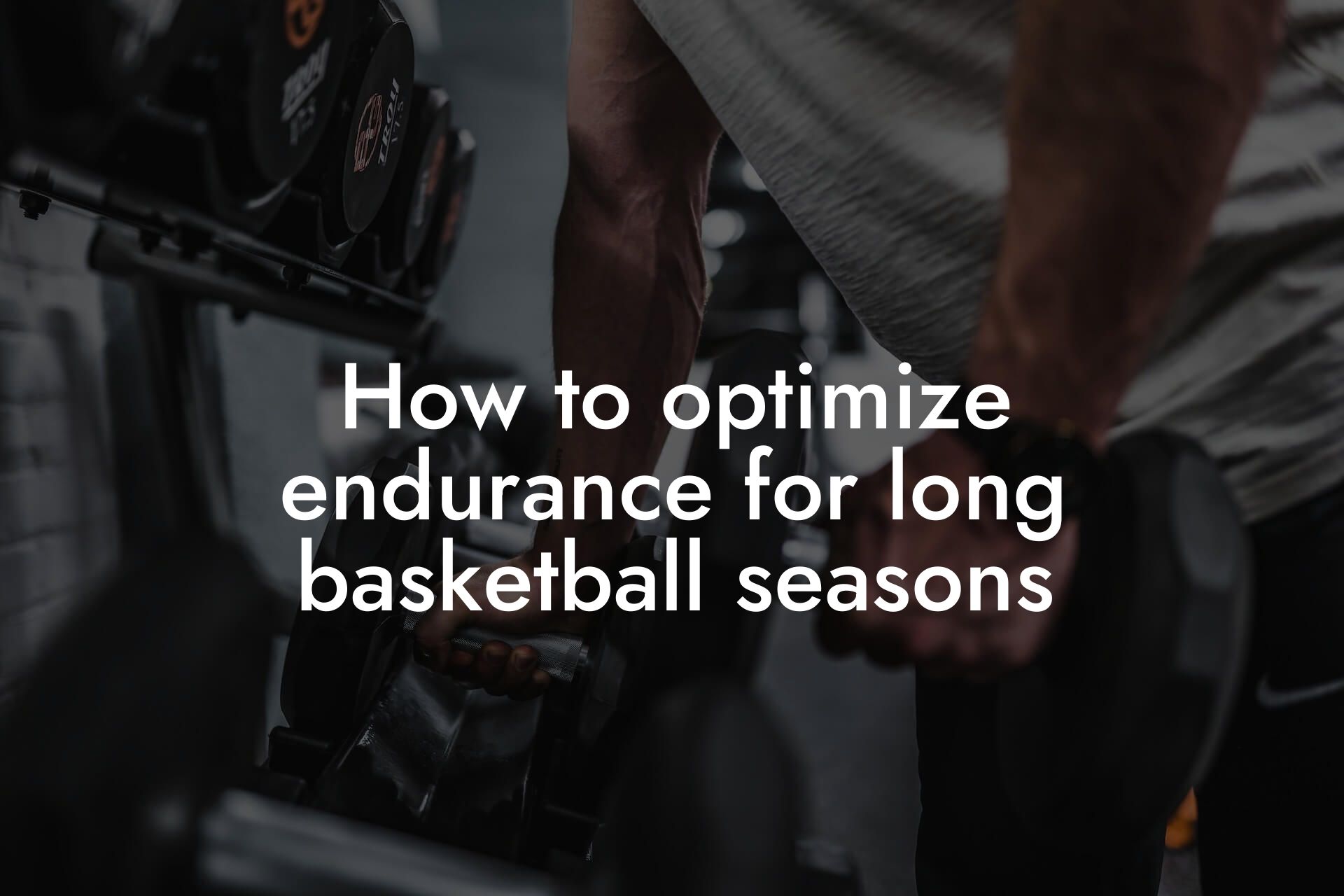As a high-earning professional, you understand the importance of maintaining a healthy and athletic physique. When it comes to basketball, having a strong and agile body is crucial for success on the court. One key aspect of achieving this is through building and maintaining optimal muscle mass. In this article, we'll delve into the impact of muscle mass on basketball agility and speed, and provide you with the information you need to take your game to the next level.
Table of Contents
- The Importance of Muscle Mass for Basketball Performance
- How Muscle Mass Affects Agility
- The Role of Muscle Mass in Speed Development
- The Optimal Muscle Mass for Basketball Players
- How to Build and Maintain Optimal Muscle Mass for Basketball
- The Benefits of DEXA Scanning for Basketball Players
- Frequently Asked Questions
The Importance of Muscle Mass for Basketball Performance
Muscle mass plays a critical role in basketball performance, as it directly affects an athlete's power, speed, agility, and endurance. Having sufficient muscle mass enables basketball players to explosively jump, quickly change direction, and sustain a high level of intensity throughout the game. Moreover, muscle mass helps to improve overall athletic performance by increasing strength, power, and speed.
How Muscle Mass Affects Agility
Agility is a critical component of basketball, requiring quick changes of direction, rapid acceleration, and deceleration. Muscle mass has a significant impact on agility, as it enables athletes to generate force and power quickly. With more muscle mass, basketball players can accelerate and decelerate faster, making them more agile and better equipped to evade opponents and create scoring opportunities.
Research has shown that athletes with higher levels of muscle mass tend to exhibit better agility performance. A study published in the Journal of Strength and Conditioning Research found that athletes with higher muscle mass indices demonstrated faster 20-yard dash times and better shuttle run performance compared to those with lower muscle mass indices.
The Role of Muscle Mass in Speed Development
Speed is a critical aspect of basketball, and muscle mass plays a significant role in its development. Having sufficient muscle mass enables athletes to generate more force and power, which is essential for rapid acceleration and deceleration. With more muscle mass, basketball players can cover more ground quickly, making them more effective at getting up and down the court.
Furthermore, muscle mass helps to improve stride length and frequency, which are essential for speed development. A study published in the Journal of Sports Sciences found that athletes with higher muscle mass indices demonstrated longer stride lengths and faster sprint times compared to those with lower muscle mass indices.
The Optimal Muscle Mass for Basketball Players
The optimal muscle mass for basketball players varies depending on factors such as position, age, and sex. However, research suggests that basketball players tend to have higher muscle mass indices compared to other athletes. A study published in the International Journal of Sports Physiology and Performance found that elite male basketball players had an average muscle mass index of 12.4 kg/m, while elite female basketball players had an average muscle mass index of 10.3 kg/m.
For high-earning professionals looking to improve their basketball performance, aiming for a muscle mass index between 10-12 kg/m is a good starting point. However, it's essential to consult with a qualified healthcare professional or certified strength and conditioning coach to determine the optimal muscle mass for your specific needs and goals.
How to Build and Maintain Optimal Muscle Mass for Basketball
Building and maintaining optimal muscle mass for basketball requires a combination of proper nutrition, resistance training, and cardiovascular exercise. Here are some tips to help you get started:
- Consume a calorie-surplus diet that includes a balance of protein, carbohydrates, and healthy fats to support muscle growth and maintenance.
- Incorporate resistance training exercises such as squats, deadlifts, and bench press to build strength and muscle mass.
- Perform plyometric exercises such as jump squats and box jumps to improve power and explosiveness.
- Incorporate agility drills such as cone drills and ladder drills to improve speed and agility.
- Engage in regular cardiovascular exercise such as jogging or cycling to improve endurance and burn excess fat.
The Benefits of DEXA Scanning for Basketball Players
As a high-earning professional, you understand the importance of tracking your progress and making data-driven decisions. DEXA (Dual-Energy X-ray Absorptiometry) scanning is a powerful tool that can help you achieve this. By providing a detailed breakdown of your body composition, including muscle mass, bone density, and body fat percentage, DEXA scanning can help you optimize your training and nutrition program for improved basketball performance.
At Tano Performance Group, we offer comprehensive DEXA scanning services that provide you with a complete picture of your body composition. Our expert team will work with you to interpret the results and develop a personalized training and nutrition program tailored to your specific needs and goals.
In conclusion, muscle mass plays a critical role in basketball agility and speed. By building and maintaining optimal muscle mass, basketball players can improve their power, speed, agility, and endurance, giving them a competitive edge on the court. Remember to focus on proper nutrition, resistance training, and cardiovascular exercise to support muscle growth and maintenance, and consider incorporating DEXA scanning into your training program to track your progress and optimize your performance.
At Tano Performance Group, we're committed to helping high-earning professionals like you achieve their fitness goals and take their performance to the next level. Contact us today to learn more about our DEXA scanning services and how we can help you optimize your basketball performance.
Frequently Asked Questions
What is the importance of muscle mass in basketball?
Muscle mass plays a crucial role in basketball as it directly affects a player's agility, speed, power, and overall performance. Having sufficient muscle mass enables players to explosively jump, quickly change direction, and maintain speed throughout the game.
How does muscle mass impact basketball agility?
Muscle mass significantly impacts basketball agility by enhancing a player's ability to rapidly change direction, accelerate, and decelerate. This is because muscle mass provides the necessary strength and power to explosively generate force, allowing players to quickly react to the ball and opponents.
What is the relationship between muscle mass and speed in basketball?
There is a strong correlation between muscle mass and speed in basketball. As muscle mass increases, so does a player's speed and acceleration. This is because muscle mass provides the necessary power and force to generate speed and propel the body forward.
How can I increase my muscle mass for basketball?
To increase muscle mass for basketball, focus on a combination of proper nutrition, resistance training, and adequate rest. Ensure you consume a calorie-surplus diet with sufficient protein to support muscle growth and repair. Additionally, incorporate exercises that target your legs, glutes, and core, such as squats, deadlifts, and lunges.
What are the benefits of having high muscle mass in basketball?
Having high muscle mass in basketball provides numerous benefits, including increased speed, agility, power, and endurance. It also enhances a player's ability to jump higher, accelerate faster, and maintain speed throughout the game. Furthermore, high muscle mass reduces the risk of injury and improves overall athletic performance.
How does muscle mass affect a player's vertical jump?
Muscle mass has a direct impact on a player's vertical jump. As muscle mass increases, so does the ability to explosively generate force, resulting in a higher vertical jump. This is because muscle mass provides the necessary strength and power to propel the body upward.
Can I still be fast and agile with low muscle mass?
While it's possible to be fast and agile with low muscle mass, it's not ideal. Low muscle mass can limit a player's ability to generate power and speed, making it more challenging to accelerate and decelerate quickly. However, proper training and technique can help compensate for low muscle mass to some extent.
How does muscle mass impact a player's endurance in basketball?
Muscle mass plays a significant role in a player's endurance in basketball. As muscle mass increases, so does the ability to sustain effort over time. This is because muscle mass provides the necessary energy stores and endurance to maintain speed and intensity throughout the game.
What are some exercises to improve muscle mass for basketball?
Some effective exercises to improve muscle mass for basketball include squats, deadlifts, lunges, leg press, calf raises, and step-ups. These exercises target the legs, glutes, and core, which are essential for generating power, speed, and agility on the court.
How often should I train to improve muscle mass for basketball?
To improve muscle mass for basketball, aim to train 3-4 times per week, with at least one day of rest in between. This allows for adequate recovery time and ensures progressive overload, which is essential for muscle growth and development.
What is the role of nutrition in building muscle mass for basketball?
Nutrition plays a critical role in building muscle mass for basketball. Ensure you consume a calorie-surplus diet with sufficient protein (1.2-1.6 grams per kilogram of body weight) to support muscle growth and repair. Additionally, focus on complex carbohydrates and healthy fats to provide energy and support muscle function.
How long does it take to see improvements in muscle mass for basketball?
The time it takes to see improvements in muscle mass for basketball varies depending on individual factors, such as training experience, nutrition, and genetics. However, with consistent training and proper nutrition, noticeable improvements can be seen in 6-12 weeks.
Can I improve my muscle mass for basketball without weights?
While weights are an effective way to improve muscle mass for basketball, it's not the only option. Bodyweight exercises, such as squats, lunges, and plyometric exercises, can also be effective in building muscle mass and improving athletic performance.
How does muscle mass impact a player's ability to change direction quickly?
Muscle mass has a direct impact on a player's ability to change direction quickly. As muscle mass increases, so does the ability to rapidly generate force and decelerate, allowing players to quickly change direction and accelerate in the opposite direction.
What are some common mistakes to avoid when trying to improve muscle mass for basketball?
Common mistakes to avoid when trying to improve muscle mass for basketball include inadequate nutrition, insufficient rest and recovery, and poor training techniques. Additionally, neglecting to incorporate exercises that target the core and glutes can limit athletic performance.
How does muscle mass impact a player's overall athletic performance?
Muscle mass has a profound impact on a player's overall athletic performance. It enhances speed, agility, power, endurance, and overall athleticism, allowing players to perform at a higher level and gain a competitive edge.
Can I improve my muscle mass for basketball at any age?
Yes, it's possible to improve muscle mass for basketball at any age. While muscle growth and development may slow down with age, consistent training and proper nutrition can still lead to noticeable improvements in athletic performance.
How does muscle mass impact a player's risk of injury in basketball?
Muscle mass has a significant impact on a player's risk of injury in basketball. As muscle mass increases, so does the ability to absorb and distribute force, reducing the risk of injury. Additionally, high muscle mass provides a protective effect on joints and tendons.
What are some signs of muscle imbalances in basketball players?
Signs of muscle imbalances in basketball players include uneven strength and development between the left and right sides of the body, poor posture, and limited range of motion. These imbalances can lead to decreased athletic performance and increased risk of injury.
How can I identify my muscle imbalances for basketball?
To identify muscle imbalances for basketball, perform a thorough assessment of your strength, flexibility, and range of motion. This can be done with the help of a qualified trainer or coach. Additionally, pay attention to any asymmetries or limitations in your athletic performance.
How does muscle mass impact a player's mental toughness and confidence in basketball?
Muscle mass has a significant impact on a player's mental toughness and confidence in basketball. As muscle mass increases, so does a player's sense of power and control, leading to increased confidence and mental toughness on the court.
Can I improve my muscle mass for basketball without sacrificing my agility and speed?
Yes, it's possible to improve muscle mass for basketball without sacrificing agility and speed. Focus on exercises that target multiple muscle groups at once, such as squats and lunges, and incorporate plyometric and agility drills into your training program.
How does muscle mass impact a player's overall basketball IQ?
Muscle mass has an indirect impact on a player's overall basketball IQ. As muscle mass increases, so does a player's ability to execute complex movements and react quickly to game situations, leading to improved decision-making and overall basketball IQ.
Here are some related articles you might love...
- Maintaining bone density to prevent injuries in basketball
- Strength and conditioning programs for basketball players
- How to optimize endurance for long basketball seasons
- The importance of hydration and nutrition in basketball
- How body composition impacts vertical leap in basketball
- The role of DEXA scans in monitoring basketball player health
- Off-season training for professional basketball players
- Reducing body fat for optimal basketball performance
- Nutrition tips for sustaining energy during basketball games
Zak Faulkner
Zak Faulkner is a leading authority in the realm of physical health and body composition analysis, with over 15 years of experience helping professionals optimise their fitness and well-being. As one the experts behind Tano Performance Group, Zak has dedicated his career to providing in-depth, science-backed insights that empower clients to elevate their physical performance and overall health.
With extensive knowledge of DEXA technology, Zak specializes in delivering comprehensive body assessments that offer precise data on body fat, muscle mass, bone density, and overall physique. His expertise enables individuals to make informed decisions and achieve their fitness goals with accuracy and confidence. Zak’s approach is rooted in a deep understanding of human physiology, combined with a passion for helping clients unlock their full potential through personalised strategies.
Over the years, Zak has earned a reputation for his commitment to excellence, precision, and client-focused service. His guidance is trusted by top professionals who demand the best when it comes to their health. Whether advising on fitness programs, nutritional strategies, or long-term wellness plans, Zak Faulkner’s insights are a valuable resource for anyone serious about taking their health and fitness to the next level.
At Tano Performance Group, Zak continues to lead our Content Team revolutionising how professionals approach their physical health, offering unparalleled expertise that drives real results.




